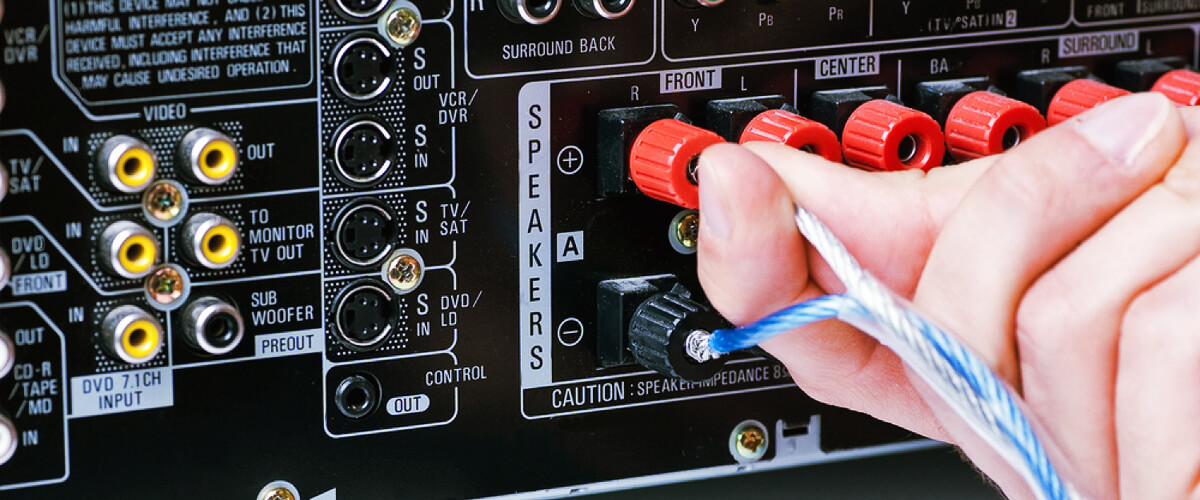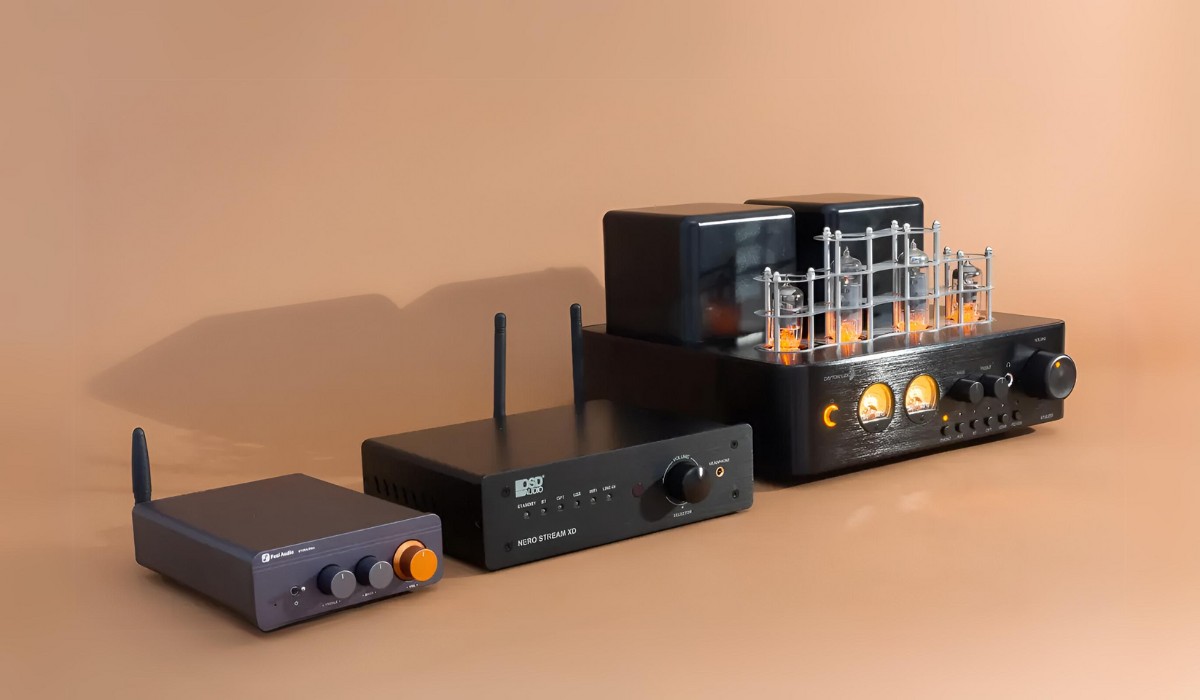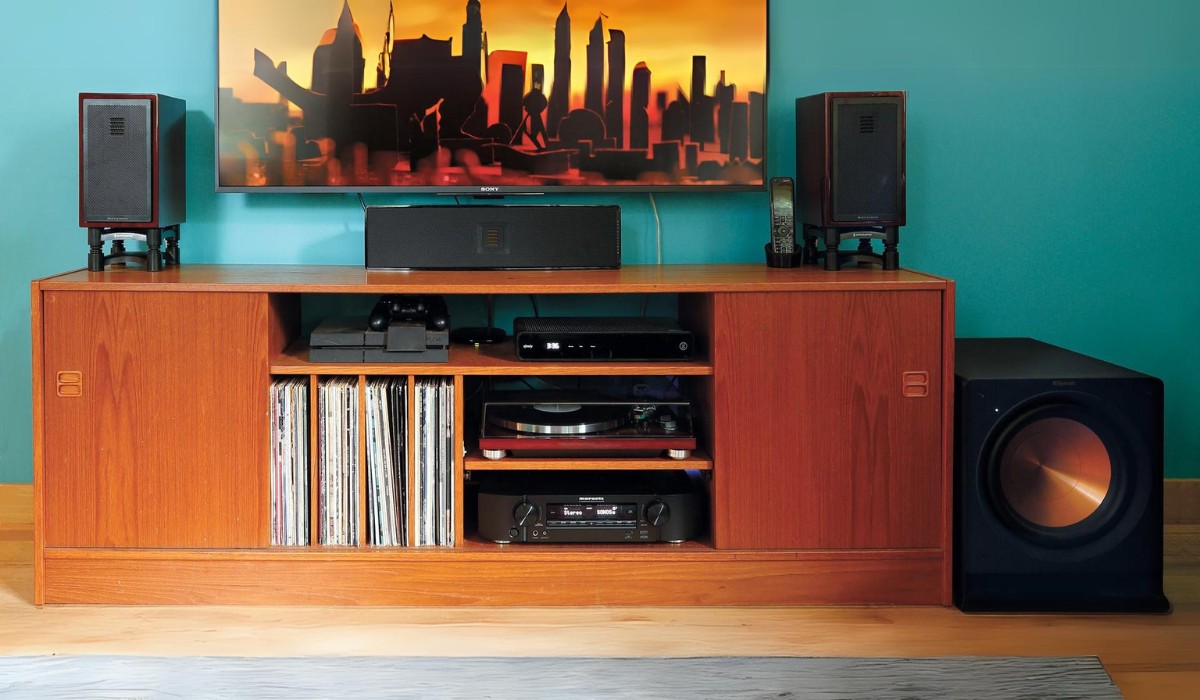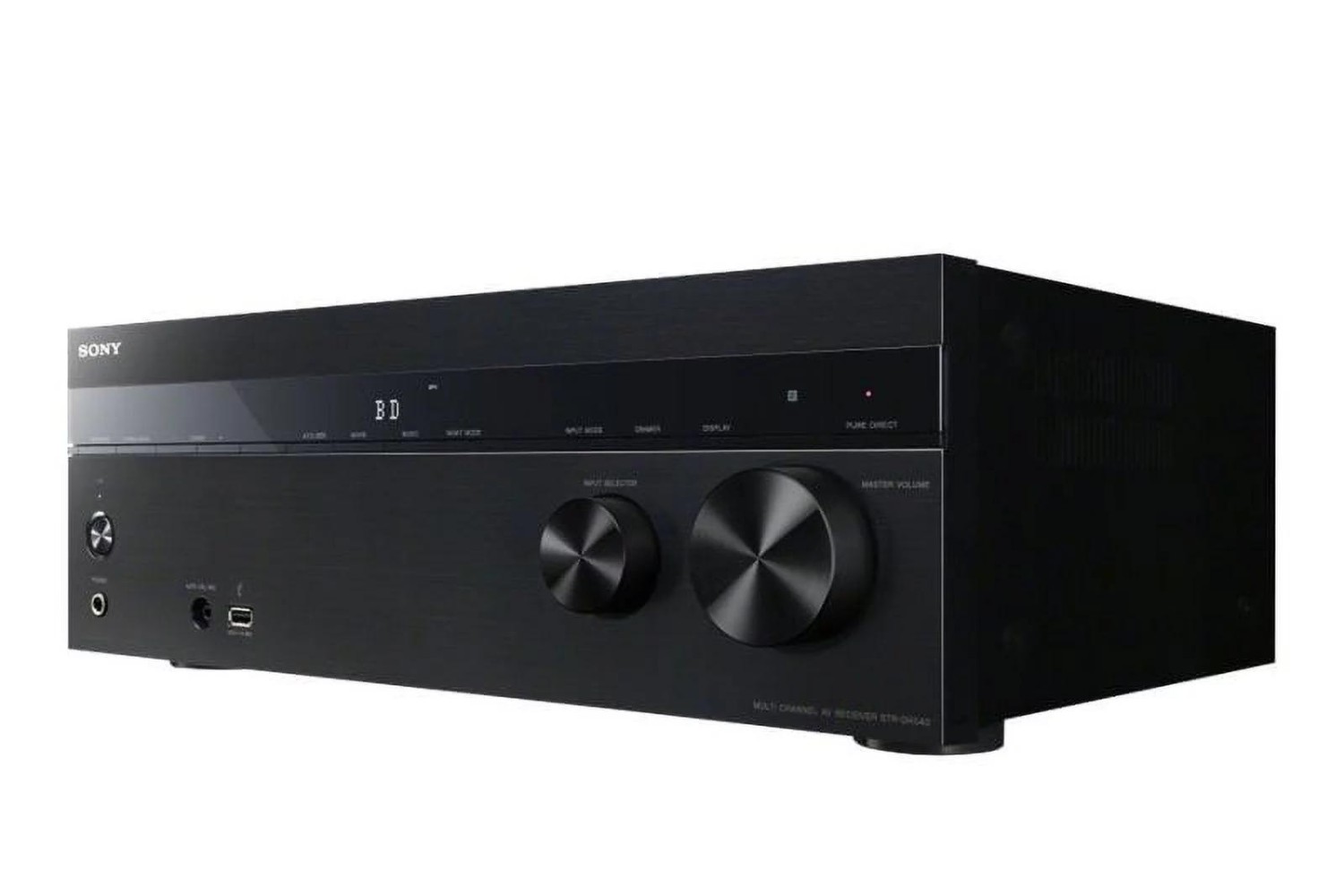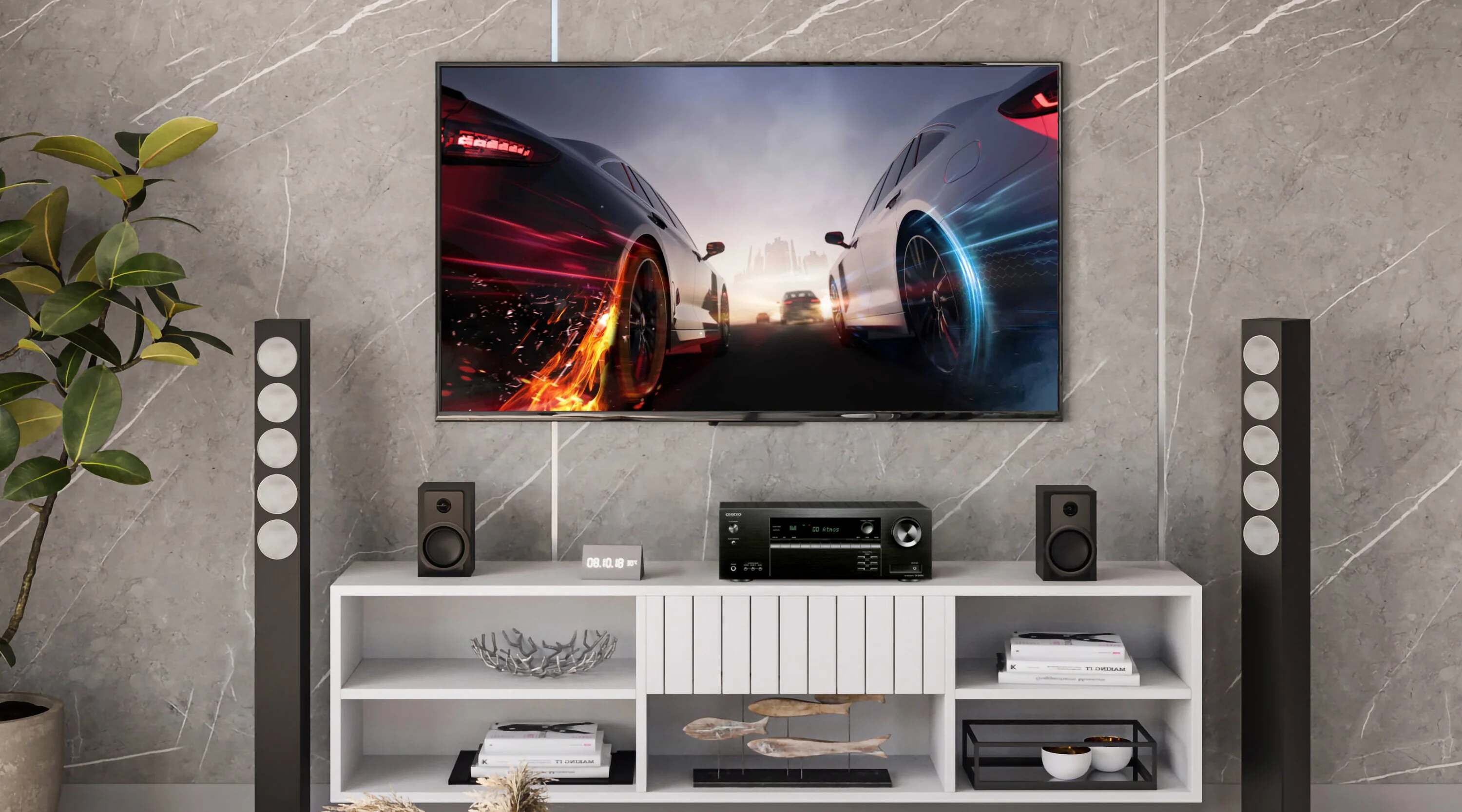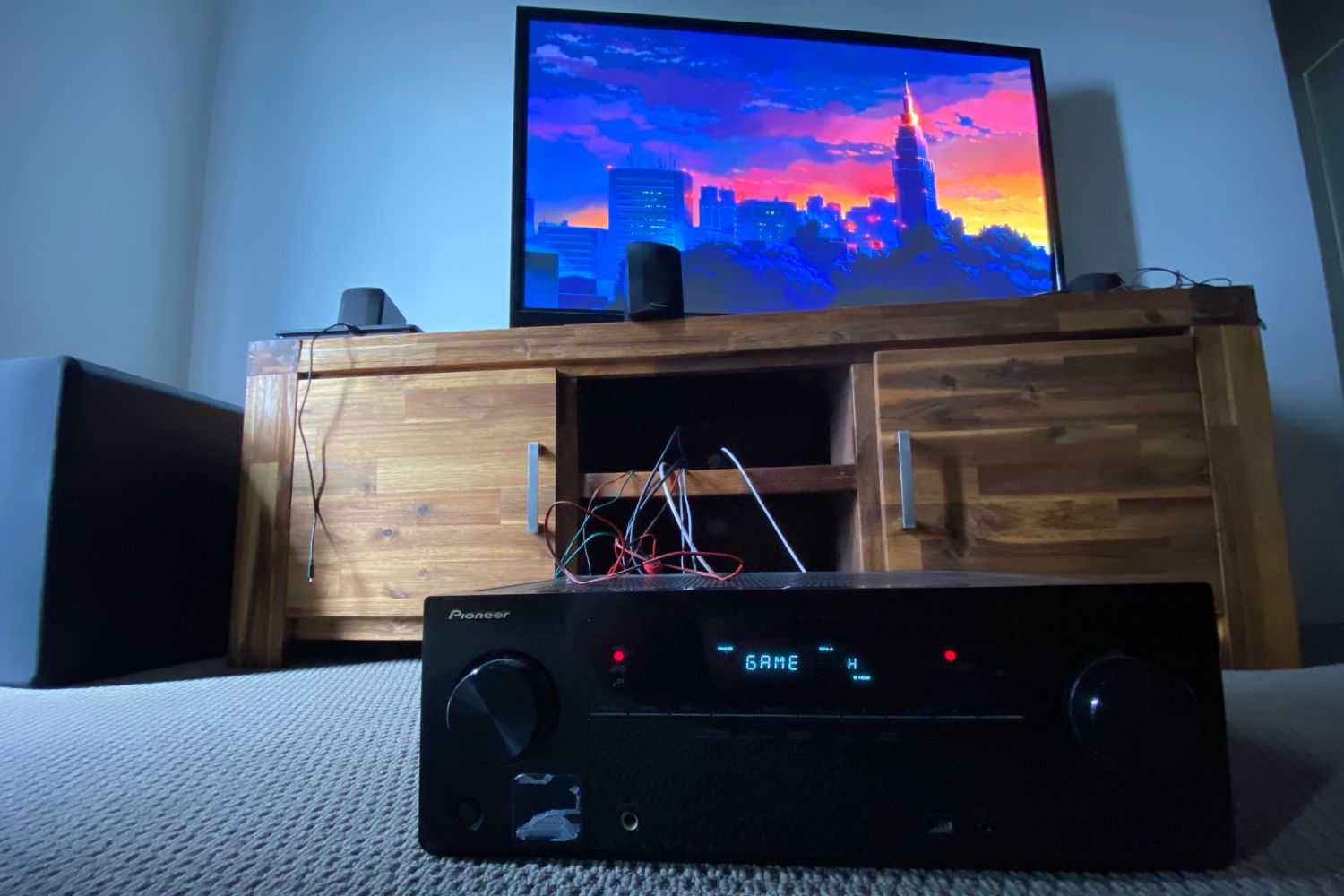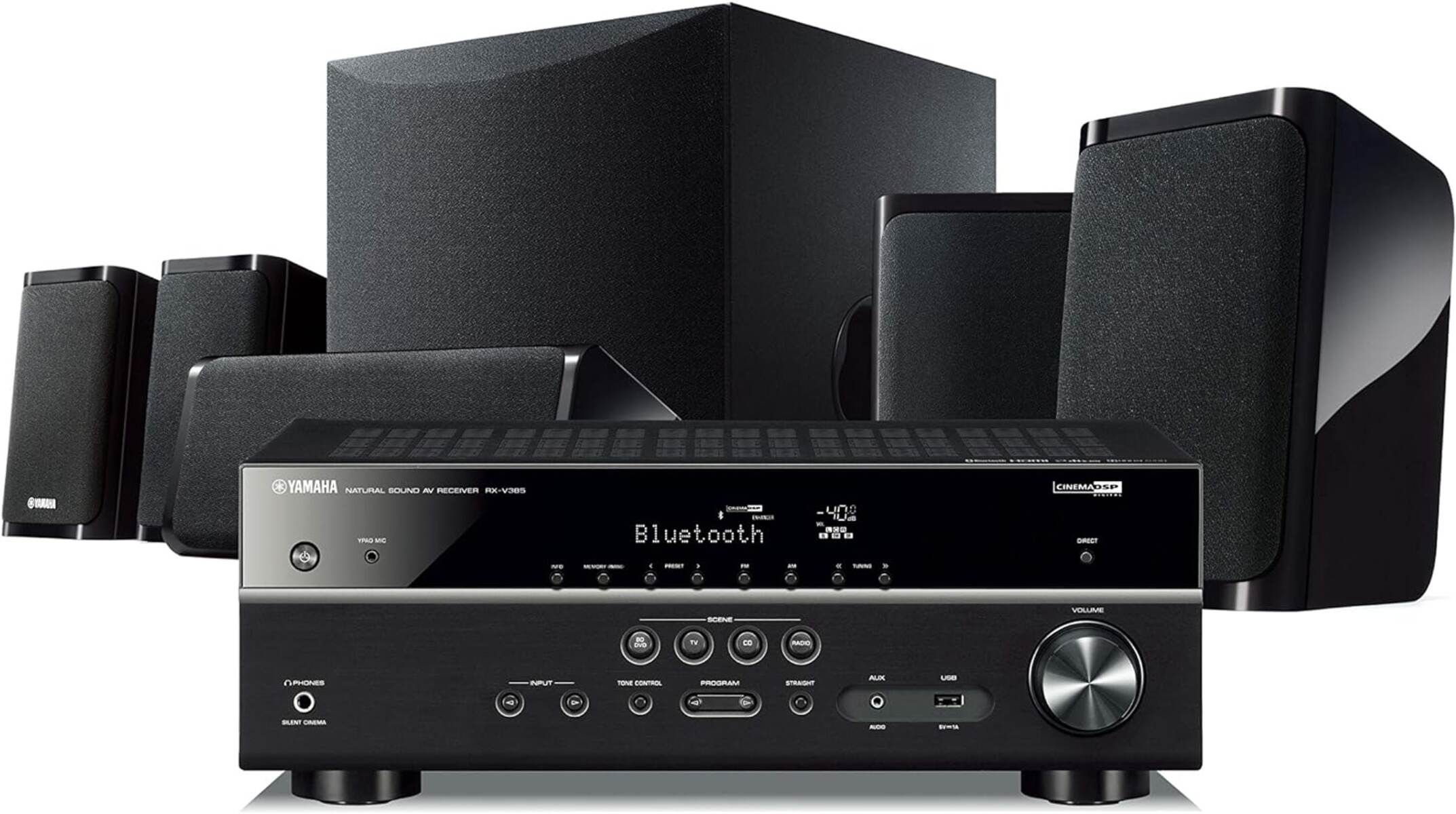Introduction
Connecting speakers to an AV receiver is a fundamental step in creating a captivating audio experience for your home entertainment system. By seamlessly integrating these components, you can unlock the full potential of your audio setup, immersing yourself in rich, high-fidelity sound. Whether you're a seasoned audiophile or a novice enthusiast, this guide will walk you through the process, ensuring that you can enjoy the full spectrum of sound from your speakers.
Understanding the intricacies of connecting speakers to an AV receiver is crucial for optimizing your home audio setup. By following the steps outlined in this guide, you will be able to harness the power of your AV receiver and speakers, creating a seamless and immersive audio environment. From gathering the necessary cables and equipment to configuring the AV receiver settings, each step plays a vital role in ensuring that your speakers are seamlessly integrated with the receiver.
As you embark on this journey, it's important to approach the process with a sense of excitement and anticipation. The ability to connect your speakers to an AV receiver is not just a technical task; it's an opportunity to unlock the full potential of your audio system and elevate your listening experience. With the right guidance and a willingness to delve into the intricacies of audio equipment, you can transform your living space into a haven of rich, dynamic sound.
Let's delve into the essential steps required to connect your speakers to an AV receiver, empowering you to create an audio environment that resonates with the nuances of your favorite music, movies, and more.
Step 1: Gather Necessary Cables and Equipment
Before embarking on the process of connecting your speakers to an AV receiver, it’s essential to gather the necessary cables and equipment. This step lays the foundation for a seamless and effective integration, ensuring that you have all the components required to complete the setup.
First and foremost, identify the type of cables needed to establish the connection between the AV receiver and your speakers. Depending on the specific inputs and outputs of your equipment, you may require speaker wire, RCA cables, HDMI cables, or optical cables. Take note of the length required to span the distance between the receiver and each speaker, allowing for some additional slack to accommodate any necessary adjustments.
Next, ensure that you have the appropriate tools to facilitate the setup process. Wire cutters, wire strippers, and cable ties can be invaluable for managing and organizing the cables, minimizing clutter and potential interference. Additionally, consider the placement of your speakers in relation to the AV receiver, as this will influence the cable lengths needed to establish a clean and tidy connection.
It’s also crucial to verify that your AV receiver and speakers are compatible in terms of impedance and power handling. Review the specifications of your equipment to ensure that they align, preventing any impedance mismatch or potential damage to the components. If you’re unsure about the compatibility of your AV receiver and speakers, consult the user manuals or reach out to the manufacturers for clarification.
By meticulously gathering the necessary cables and equipment, you set the stage for a smooth and efficient speaker-to-receiver connection process. This preparatory step not only streamlines the setup but also minimizes the likelihood of encountering unforeseen challenges as you progress through the subsequent stages.
Step 2: Position Your Speakers
Once you have gathered the essential cables and equipment, the next crucial step in connecting your speakers to an AV receiver is to strategically position the speakers within your listening environment. The placement of your speakers plays a pivotal role in optimizing the audio experience, influencing sound dispersion, imaging, and overall sonic performance.
Begin by assessing the layout of your room and identifying the optimal locations for your speakers. Consider factors such as the acoustics of the space, the seating arrangement, and any potential obstructions that may impact the sound projection. Ideally, speakers should be positioned at ear level when seated, creating a balanced and immersive listening experience.
When situating your speakers, adhere to the general guidelines for stereo and surround sound setups. For stereo configurations, aim to position the speakers equidistant from the primary listening area, forming an equilateral triangle with the listener. This arrangement helps to establish a cohesive soundstage and enhances stereo imaging.
In a surround sound setup, carefully place the speakers according to their designated roles, such as front, center, and rear speakers. The front speakers should flank the display or listening area, while the center speaker should be aligned with the screen, ensuring clear and articulate dialogue reproduction. Rear speakers, if applicable, should be positioned behind the primary listening area to envelop the space with ambient sound.
As you position the speakers, take into account any room-specific considerations that may impact the sound quality, such as reflective surfaces, furniture placement, and room dimensions. Experiment with different speaker placements to determine the optimal configuration that maximizes sound clarity and coherence within your unique listening environment.
By thoughtfully positioning your speakers, you lay the groundwork for an immersive and harmonious audio experience. This step sets the stage for the subsequent connection of the speakers to the AV receiver, ensuring that the audio signals are conveyed effectively and that the sonic characteristics of your speakers are fully realized.
Step 3: Connect the Speakers to the AV Receiver
With the speakers strategically positioned, the next pivotal step is to establish the physical connection between the speakers and the AV receiver. This process involves carefully linking each speaker to the corresponding output channels on the receiver, ensuring a seamless transmission of audio signals and enabling the speakers to faithfully reproduce sound from your audio sources.
Begin by identifying the output channels on the AV receiver designated for each speaker. Depending on your speaker configuration, these channels may be labeled as front left, front right, center, surround, or other specific designations corresponding to the speaker positions in your setup. Consult the receiver’s user manual to locate the appropriate output terminals for each speaker.
Once you have identified the output channels, proceed to connect the speakers using the appropriate cables. For traditional passive speakers, utilize speaker wire with bare ends or banana plugs to establish the connection. Strip a small portion of the insulation from the end of the speaker wire, ensuring that the bare wire or banana plug can be securely inserted into the corresponding terminals on the AV receiver.
When connecting the speakers, pay close attention to polarity, ensuring that the positive and negative terminals on both the speakers and the receiver are matched correctly. Maintaining proper polarity is crucial for preserving the integrity of the audio signal and ensuring that the speakers operate in phase, delivering accurate sound reproduction.
If you are utilizing powered or active speakers, the connection process may involve using RCA cables, XLR cables, or other specialized connectors, depending on the input options available on the speakers and the output options on the AV receiver. Refer to the user manuals of both the speakers and the receiver to determine the most suitable connection method for your specific setup.
As you establish the physical connections, take care to route the cables in a tidy and organized manner, minimizing the potential for tangling or interference. Secure the cables along the designated paths, utilizing cable ties or clips to maintain a clean and unobtrusive cable layout.
By methodically connecting the speakers to the AV receiver, you pave the way for a cohesive and synchronized audio system. This step forms the critical link between the audio sources and the speakers, establishing the conduit through which the sonic intricacies of your favorite music, movies, and multimedia content will be conveyed.
Step 4: Configure the AV Receiver Settings
Once the speakers are physically connected to the AV receiver, the next essential step is to configure the receiver settings to optimize the audio performance and ensure seamless integration with your speakers. This process involves accessing the receiver’s menu system and adjusting various parameters to align with your speaker configuration, room acoustics, and personal preferences.
Begin by accessing the receiver’s setup menu, typically accessible through the on-screen display or the front panel interface. Navigate to the speaker setup or audio settings section, where you can specify the size, distance, and crossover settings for each connected speaker. By accurately defining these parameters, the receiver can tailor the audio output to suit the characteristics of your speakers and the acoustic properties of your listening environment.
Specify the size of each speaker, designating whether they are classified as small or large. This setting influences the crossover frequencies and bass management, ensuring that the low-frequency content is directed to the appropriate speakers, be it the main front speakers, a dedicated subwoofer, or other configured bass modules.
Next, input the distance from each speaker to the primary listening position. This distance calibration enables the receiver to synchronize the arrival times of the audio signals, aligning the sound from each speaker to create a cohesive and immersive listening experience. Accurate distance settings are crucial for maintaining proper audio imaging and soundstage coherence.
Depending on your receiver model, you may have the option to perform an automatic room calibration using a built-in calibration system, such as Audyssey or MCACC. These systems utilize included microphones to analyze the acoustic characteristics of your room and speakers, automatically adjusting the receiver settings to compensate for room acoustics and speaker performance.
Additionally, consider enabling any advanced audio processing features offered by the receiver, such as Dolby Atmos, DTS:X, or other immersive audio technologies. These features expand the spatial dimension of the audio, delivering a more enveloping and lifelike sonic experience, particularly in a home theater environment.
By meticulously configuring the AV receiver settings, you harness the full potential of your speakers and create an audio environment that resonates with the nuances of your favorite media. This step not only optimizes the sonic performance but also ensures that your speakers and receiver operate in harmony, delivering a captivating and immersive audio experience.
Step 5: Test the Speakers
After completing the physical connections and configuring the AV receiver settings, the final step in connecting your speakers to the receiver involves testing the audio output to ensure that the system is operating as intended. This critical phase allows you to verify the functionality of each speaker, assess the overall sound quality, and make any necessary adjustments to fine-tune the audio performance.
Commence the testing process by playing a variety of audio content through the speakers, encompassing music, movies, and other multimedia sources. This diverse range of material enables you to evaluate the speakers’ performance across different genres and audio formats, providing a comprehensive assessment of their sonic capabilities.
Listen attentively for any anomalies or irregularities in the sound output, such as distortion, imbalance, or inconsistencies in the frequency response. Pay particular attention to the low-frequency reproduction, ensuring that the bass frequencies are well-defined and integrated seamlessly with the midrange and treble frequencies.
As you test the speakers, verify that each individual speaker is producing sound and that the audio is spatially coherent, aligning with the intended placement and configuration. Check for proper channel assignment, ensuring that the sound emanates from the correct speakers in accordance with the source material and the receiver’s settings.
Assess the tonal balance and imaging of the soundstage, gauging the clarity of vocals, the precision of instrument placement, and the overall sense of sonic immersion. Take note of any adjustments needed to refine the speaker positioning, acoustic treatment, or receiver settings to optimize the audio performance.
If your AV receiver offers a test tone generator or calibration system, utilize these tools to confirm the proper functionality and integration of each speaker within your listening environment. Follow the prompts to ensure that the test tones are emitted from the correct speakers at the appropriate levels, validating the accuracy of the speaker connections and receiver settings.
Throughout the testing phase, consider experimenting with different audio presets, equalization settings, and surround sound modes to explore the full range of sonic possibilities offered by your AV receiver and speakers. This experimentation allows you to tailor the audio presentation to suit your preferences and the specific characteristics of your listening space.
By diligently testing the speakers, you validate the successful integration of your speakers with the AV receiver, affirming that the audio system operates harmoniously and delivers a captivating sonic experience. This final step ensures that your speakers are poised to faithfully reproduce the nuances of your favorite media, enriching your audiovisual endeavors with immersive and dynamic sound.
Conclusion
Embarking on the journey to connect your speakers to an AV receiver is a transformative endeavor that culminates in the creation of a captivating audio environment. By following the essential steps outlined in this guide, you have navigated the intricacies of speaker integration, positioning, and configuration, empowering yourself to unlock the full potential of your audio system.
From meticulously gathering the necessary cables and equipment to strategically positioning your speakers within your listening space, each step has contributed to the seamless integration of your speakers with the AV receiver. The physical connections and meticulous configuration of the receiver settings have laid the groundwork for a cohesive and harmonious audio system, ready to faithfully reproduce the intricacies of your favorite music, movies, and multimedia content.
As you tested the speakers, you meticulously evaluated their sonic performance, ensuring that each speaker operates in concert with the others, delivering a coherent and immersive audio experience. This critical phase allowed you to fine-tune the system, making any necessary adjustments to optimize the sound quality and spatial imaging, ultimately enhancing your audiovisual pursuits.
Now, armed with a comprehensive understanding of connecting speakers to an AV receiver, you are poised to revel in the rich, dynamic sound that emanates from your speakers. The seamless integration of your speakers with the AV receiver has transformed your listening space into a realm of sonic splendor, where the nuances of sound are faithfully reproduced, enriching your audiovisual encounters with depth and clarity.
As you continue to explore the capabilities of your audio system, consider experimenting with different audio sources, genres, and media formats to fully appreciate the breadth of sonic expression that your speakers and AV receiver can deliver. Embrace the immersive potential of your audio setup, allowing the captivating sound to transport you into the heart of your favorite music, cinematic experiences, and multimedia adventures.
With the knowledge and expertise gained from this guide, you have embarked on a journey that transcends mere technical integration; you have embarked on a quest to elevate your audio experience, immersing yourself in the boundless realm of sound. As you revel in the symphony of audio that unfolds before you, may the seamless connection of your speakers to the AV receiver serve as a gateway to a world of sonic wonder and delight.







